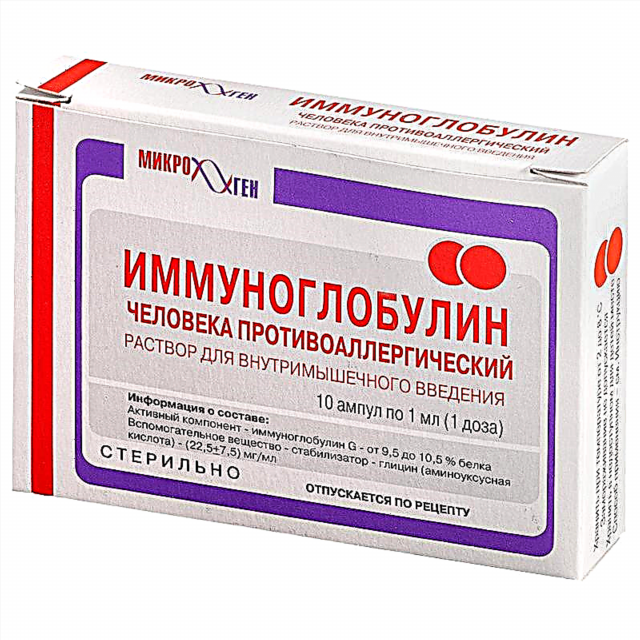
Every fifth Russian woman has to give birth surgically. If earlier a cesarean section was a relative rarity, now the list of indications for such a delivery has been expanded, and there is nothing surprising in the fact that the pregnancy ends on the operating table. But after a few years, a woman may have a desire not only to become a mother again, but also to try to give birth on her own. Is this possible, we will tell you in this article.

Is there such a possibility?
Normal physiological delivery after cesarean section is possible. But only if there is only one operative delivery in the history of the pregnant woman. The ability to ask a doctor for a full-fledged birth is assigned to a woman by the recommendations of the Ministry of Health. But the doctor may have good reason to refuse.
The fact is that a lot depends on the reason why a woman had a cesarean section for the first time. If the operation was planned due to a narrow pelvis, myopia, cardiovascular diseases of a woman, or the presence of scars on the uterus from other operations that were performed before the first pregnancy, then the reason is not considered eliminated and there is no reason to permit childbirth through physiological pathways. The second birth should take place, like the first, through surgery.
If the reason for the first operation was the weakness of the birth forces, in the placenta previa, the wrong location of the fetus in the uterus, other pathologies of pregnancy, then the second birth through the vaginal birth canal is possible, if the obstetrician-gynecologist considers the woman's condition in the second pregnancy satisfactory and does not find any special contraindications to childbirth.


Each subsequent cesarean section is performed along the first scar, that is, the uterus is dissected in the same area, removing the old connective tissue. Therefore, with each subsequent pregnancy, the scar on the uterus becomes thinner and thinner. For this reason after two caesarean sections, natural childbirth is not allowed in any case. The risk of rupture of the uterus along the scar during contractions and attempts is too great. A rupture of the reproductive organ can mean death for both the child and his mother, since the bleeding from the first seconds becomes massive, the blood loss is great and it is almost impossible to replenish it.
Even 20 years ago, in obstetrics, independent childbirth after cesarean was not accepted. A woman who once had a similar operation could only become a mother again in the same way. But the latest trends in world medicine, the development of obstetrics, the emergence of new methods of childbirth and pregnancy management made natural childbirth possible after KS surgery, first in European countries, and now in Russia.


There are no universal recommendations. In the case of each specific pregnancy, the doctor determines and decides the issue on an individual basis, since for childbirth with a scar on the uterus, a number of important conditions must be met.
When is it allowed?
The decision on whether a woman can be allowed to give birth again naturally, if the first was a cesarean section, is primarily influenced by the elimination of the root cause. If the first time a woman underwent surgery because of the breech presentation of the fetus, and in the second pregnancy the baby is positioned correctly, there is no reason for refusal.
Next, pay attention to the time elapsed after the first operation. If less than 2 years pass, spontaneous childbirth is not allowed, since the connective tissue of the scar does not inspire confidence in doctors. For complete scarring and restoration of elasticity, at least 2 years are needed, during which a woman after the first operation is not recommended to get pregnant, have abortions, or surgery on the uterus.
If more than 8 years have passed after the birth of the first child, the likelihood that childbirth is naturally possible tends to zero - the connective tissue in the scar area has become rough, and therefore the risk of rupture during labor is also quite high.

After 20 weeks of pregnancy, the most accurate examination of the scar itself for consistency. Of course, it is optimal to do hysteroscopy or hydrography even before pregnancy, at the planning stage, but in practice, alas, this is not always the case. If a woman becomes pregnant with a scar on the uterus, in the second trimester, doctors will do an ultrasound scan in order to assess the scar, its uniformity, structure and thickness once a month, and in the third trimester - once every 10 days.
If, at the final stage of gestation, the scar thickness is sufficient (at least 3-4 mm), then childbirth can be allowed. With an untenable scar, even the gestation itself is dangerous, therefore, there is no question of giving birth independently.


Much in the doctor's decision will depend on how the previous operation was performed. Upon discharge from the hospital after the first birth, the doctor will be able to get a complete picture of what suture material was used for the internal scar, how the rehabilitation and recovery process went, how the uterus contracted, whether there were postpartum infections and bleeding. In general, vaginal delivery after the first caesarean section will be allowed if:
- after the first birth, it took from 2 to 6-7 years;
- the scar is uniform, has no thinning, no "niches" and perforations are found, has sufficient thickness (from 3 mm);
- the first operation was performed using the horizontal cross-sectional method in the lower uterine segment;
- the woman had no complications in the postoperative period;
- current pregnancy is not accompanied by pathologies;
- the child is in cephalic presentation, there is no umbilical cord entanglement and knots on the umbilical cord;
- the placenta is not fixed on the scar area, even its partial edge overlap on the scar area is excluded;
- the estimated weight of the fetus does not exceed 3.7 kg;
- the age of the pregnant woman at the time of delivery does not exceed 36 years.


If all conditions are met, the doctor can allow natural childbirth, but he will announce this decision not earlier than the second half of the third trimester. By this time, a complete and detailed picture will be formed, including the features of presentation and the weight of the fetus.
An important factor is a woman's psychological readiness to give birth on her own. It is with this that sometimes difficulties arise. According to statistics, up to 45% of women who were determined to give birth to their second child on their own, at the last moment ask for a cesarean section, because they are psychologically very afraid that the uterus will rupture during labor.

Contraindications
There are quite a few cases when a woman will receive a guaranteed refusal in her request to allow independent childbirth:
- the reason that became the basis for the first operation has not been eliminated, that is, it remains in the current pregnancy;
- pregnancy came too early or after a long break;
- in the current pregnancy, the woman was lying on preservation, pathologies of gestation or fetal malformations were identified;
- the second child in the womb, according to the ultrasound specialists, is large (overweight or more than 3.7 kg two weeks before birth);
- the scar is insolvent;
- after the first operation, the postpartum woman recovered hard, with complications;
- negative Rh factor of the mother in the presence of an antibody titer in the blood, which may indicate Rh-conflict between the mother and the fetus.

How to Prepare?
If there is a great desire to give birth on your own, without a surgeon's scalpel, it is important to approach the issue of planning a second pregnancy as responsibly as possible. For two years, a woman should be protected to exclude an unplanned pregnancy, abortion, diagnostic curettage. It is necessary to strictly follow all the recommendations that relate to the recovery period after a cesarean section - not to lift weights, not to start having sex too early, to visit a gynecologist for a preventive examination.
Before getting pregnant, a woman needs to do an ultrasound of the pelvic organs, take smears of the vaginal microflora, and also be examined for possible infections. Separately, you need to pay attention to the examination of the scar on the uterus. For this, ultrasound alone is not enough, you need to do a hysteroscopy.

Only after the doctor approves the planning, you can start the most enjoyable part of it - conceiving a baby. When the test shows two strips, you need to register with the antenatal clinic as early as possible. With a scar on the uterus, a woman must visit the gynecologist more often and do an ultrasound scan, take various tests so as not to miss any pathological changes, if any.
At the 35th week of pregnancy, the doctor who conducts the pregnancy, with all the examinations and test results, will convene a consultation, which will include other obstetricians-gynecologists and the head of the consultation, as well as doctors of the maternity hospital in which it is supposed to give birth. This will decide whether to allow a particular woman to give birth naturally.
At 37 weeks, if the decision was positive, the woman is hospitalized. In the maternity hospital, she is examined again, all the nuances of the current pregnancy are clarified.

Features of childbirth after CS
Labor after the first CS is usually tried to be stimulated with medication for a period of 39 weeks. Do not wait for the onset of labor, because labor can begin at any time of the day. And given that a woman at any time may need a ready-made operating room and a free surgical team for the operation, if something goes wrong, they try to guess the beginning of labor in the daytime.
A woman, if she is opposed to interference in the affairs of nature, can express her categorical disagreement with stimulation with medications, and then doctors will give her the opportunity to wait for the start of physiological labor.
Childbirth after CS requires a lot of skill on the part of doctors and obstetricians. From the first contractions, the condition of the baby and the woman in labor is monitored especially carefully. That is why spontaneous childbirth after a previous operation on the uterus is not recommended at home. If there is labor, but it is weak, stimulants can be used, but in no case are drugs based on prostaglandins ("Dinopriston", in particular, contraindicated). The ban is associated with the need to exclude intense and strong contractions that can lead to scar dehiscence.


Particular attention is paid to attempts. A woman should listen to and comply with the requirements of the medical team, not push without a command, this will reduce the risk of uterine rupture. Pressing on the stomach, "squeezing" the baby to obstetricians during attempts at a woman in labor with a scar is contraindicated.
In childbirth, a woman can use any techniques that relieve pain (breathe, massage the sacrum), but you can not count on anesthesia with medication. If anesthesia is performed, the woman in labor may not feel the moment of rupture of the uterus along the scar, if this happens.
After the baby is born, obstetricians must manually carefully examine the area of the scar on the uterus to rule out possible tears and damage. A woman will not feel this process, because it is customary to carry out palpation only after intravenous administration of an anesthetic, which will immerse the postpartum woman into a sound medication sleep for 10-15 minutes.
You need to understand that at any stage of such labor, an emergency caesarean section can be performed. The recovery period usually proceeds without significant features.


Reviews
According to women, many of the choice of natural childbirth after the first cesarean is stopped by the fear of pain and rupture, complications and trauma for the child. Only every third woman who is allowed natural childbirth agrees to take advantage of this opportunity.
Those who agree are usually very pleased with themselves in the first place. A woman is no longer tormented by the latent feeling of her maternal and feminine inferiority, which almost everyone has after a cesarean section. Many people cite as advantages an easier recovery in the postpartum period and a faster establishment of lactation than it was after the first surgical delivery.

For information on whether natural childbirth is possible after a cesarean section, see the next video.



